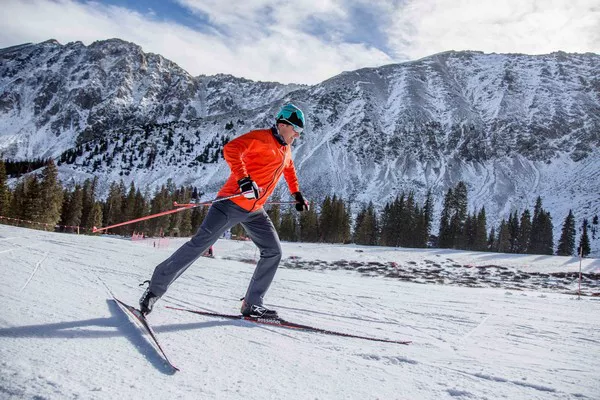Skiing is a sport that offers a thrilling combination of speed, skill, and freedom. For those seeking versatility and excitement on the slopes, all-mountain freestyle skis stand out as a fantastic choice. In this article, we will delve into the definition, benefits, comparison with other ski types, recommendations based on difficulty and budget, a comprehensive buying guide, and considerations for choosing the perfect pair of all-mountain freestyle skis to suit your personal preferences.
Defining All-Mountain Freestyle Skis
All-mountain freestyle skis are designed to excel in various terrains and conditions, blending the performance features of all-mountain skis with the playful characteristics of freestyle skis. They are typically wider than traditional park or freestyle skis, offering enhanced stability and float in deeper snow, while still maintaining the agility and maneuverability needed for park features and tricks. These skis are versatile enough to handle groomed runs, moguls, powder, and terrain parks with equal proficiency, making them a top choice for skiers who want to explore the entire mountain.
Benefits of All-Mountain Freestyle Skis
The unique combination of features in all-mountain freestyle skis provides several key benefits:
1. Versatility: All-mountain freestyle skis are truly versatile, allowing skiers to confidently navigate different types of terrain and snow conditions.
2. Maneuverability: These skis offer excellent maneuverability, making it easier to carve turns and handle jumps, rails, and other park features.
3. Floatation: The wider profile of all-mountain freestyle skis provides better floatation in powder, enhancing the overall experience in deep snow.
4. Durability: Many all-mountain freestyle skis are constructed with durable materials to withstand the rigors of park riding and aggressive skiing.
Comparison with Other Types of Skis
To better understand the role of all-mountain freestyle skis, it’s important to compare them with other ski types:
1. All-Mountain Skis: While all-mountain skis are versatile, they may lack the specific freestyle features (such as twin-tip design and softer flex) that characterize all-mountain freestyle skis.
2. Park Skis: Park skis are specifically tailored for terrain park use, often sacrificing some versatility in other conditions. They are typically lighter and more flexible than all-mountain freestyle skis.
3. Powder Skis: Designed for deep snow, powder skis are wider and offer superior floatation but may not be as agile or suitable for park riding as all-mountain freestyle skis.
Recommendations Based on Difficulty of Use and Budget
Choosing the right pair of all-mountain freestyle skis depends on your skiing ability and budget:
1. Beginners/Intermediate Skiers: Look for skis that offer forgiveness and versatility. Consider models with softer flex and moderate waist width for easier turn initiation and control. Recommended models include Rossignol Experience 88 Ti and Line Sir Francis Bacon.
2. Advanced/Expert Skiers: Opt for high-performance skis with stiffer flex and wider waist widths for stability at higher speeds and in variable conditions. Consider models like Faction Candide 3.0 and Armada ARV 106.
3. Budget-Friendly Options: For those on a budget, there are several great options available that offer good performance without breaking the bank. Look for previous season models or consider entry-level skis from reputable brands like K2, Atomic, and Salomon.
Buying Guide and Considerations
When purchasing all-mountain freestyle skis, consider the following factors:
1. Ski Length: Choose a length based on your height, weight, and skiing style. Shorter skis are more maneuverable, while longer skis offer better stability at higher speeds.
2. Flex: Determine the flex that suits your skiing ability. Softer flex is forgiving and easier to control, while stiffer flex provides better performance at speed and on aggressive terrain.
3. Waist Width: The waist width affects the ski’s performance in different conditions. Wider skis (around 90-105mm) perform better in powder, while narrower skis (around 80-90mm) are more nimble on groomed runs.
4. Construction: Consider ski construction materials and technologies. Carbon or metal reinforcements can enhance stability and durability, while lightweight materials improve agility.
5. Bindings: Choose bindings that match your skiing ability and intended use. Adjustable bindings allow for flexibility as your skiing skills progress.
How to Choose Based on Personal Needs and Preferences
Ultimately, the best way to choose all-mountain freestyle skis is to consider your personal needs and skiing preferences:
1. Skiing Style: Determine whether you prefer aggressive skiing, park riding, or a mix of both. This will influence the ski’s ideal characteristics, such as flex, camber profile, and durability.
2. Terrain Preference: Consider the type of terrain you enjoy most—whether it’s groomed runs, moguls, powder, or terrain park features. Choose skis that excel in those conditions.
3. Budget: Set a budget that aligns with your investment in skiing. Remember that quality skis can significantly enhance your skiing experience and may be worth the investment.
4. Demo Skis: Whenever possible, demo different skis to find the perfect match for your skiing style and ability. This hands-on approach allows you to experience how different skis perform on the slopes.
Conclusion
In conclusion, all-mountain freestyle skis offer an exciting blend of versatility and performance, making them an ideal choice for skiers looking to explore all aspects of the mountain. By understanding the defining features, benefits, and considerations outlined in this guide, you can confidently choose the best pair of all-mountain freestyle skis that align with your skiing goals and preferences. Happy skiing!

